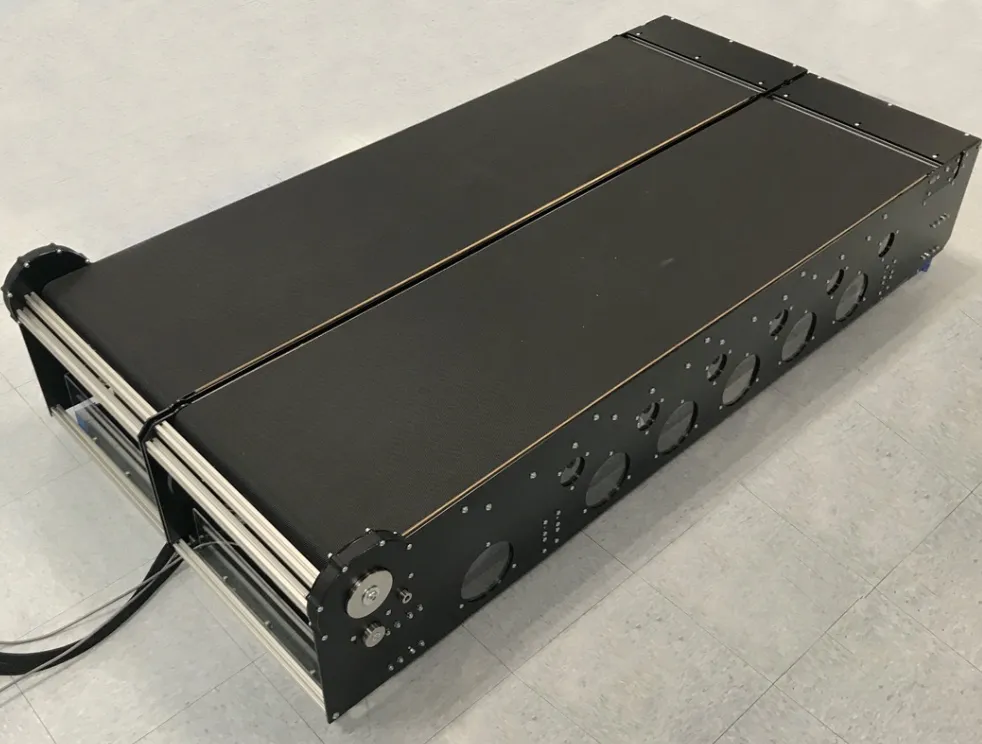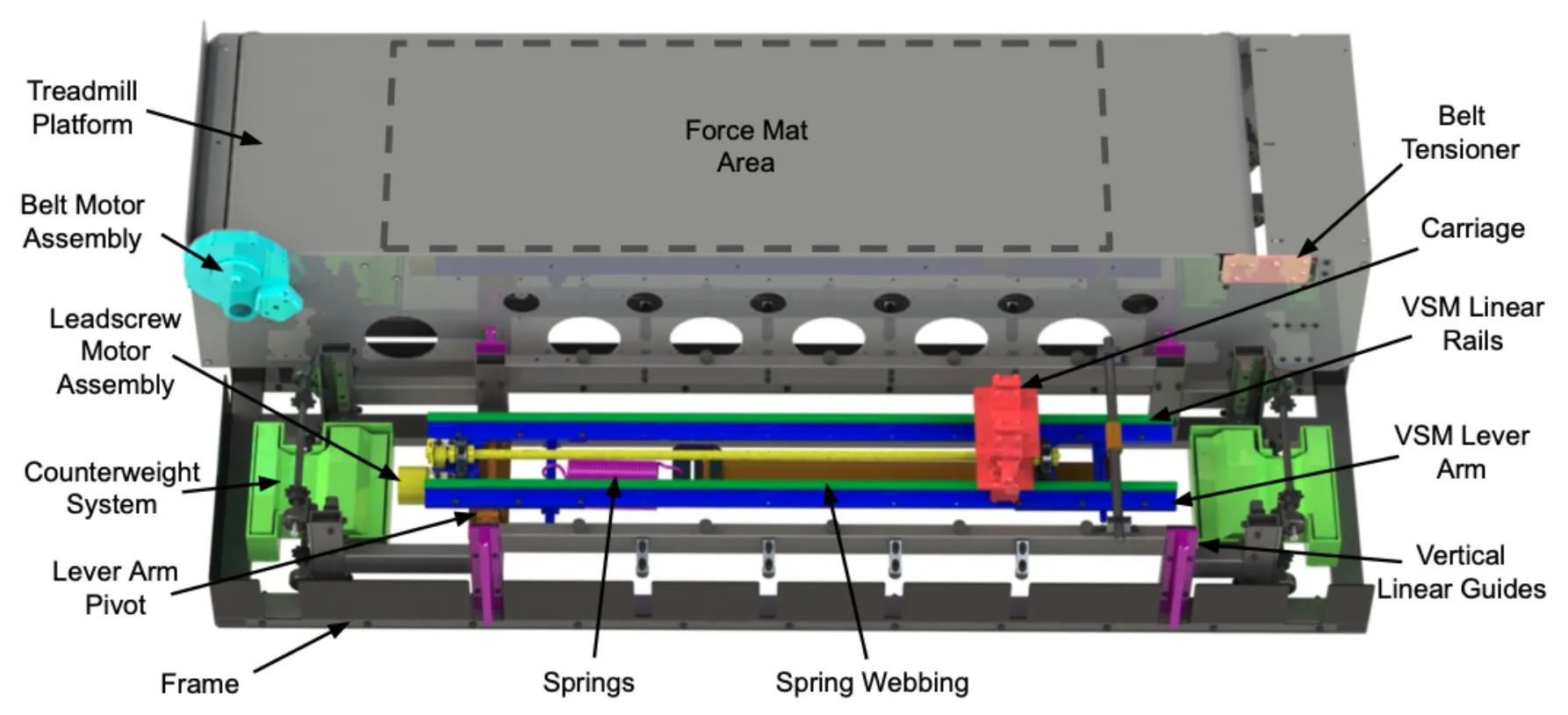VST 2.0 Design & Construction
Another one of my main Ph.D. research projects is the design and construction of the Variable Stiffness Treadmill (VST) 2.0. This is the second version of the original VST, which has been used for the past 9 years as an innovative research tool. This second iteration of the VST is similar in the sense that it is a split-belt treadmill that can lower the vertical stiffness of the belts, but it also has many improvements and advantages over the first version. As compared to VST 1.0, VST 2.0:
- is lower to the ground
- has a larger walking surface
- is capable of reducing stiffness on both belts
- works with vertical deflection, instead of angular
- is instrumented with force mats on both sides
- indepedent belt motors
This device works similarly to the first VST, by using a set of springs and changing the mechanical advantage between the springs and force applied by the subject to change stiffness. The improvements made on the VST 2.0 will allow for a wider variety of experiments and a better experimental setting. A common complaint of subjects on the first VST was that it was both too high off the ground and too small, which were both drastically improved in this version. We have hopes of testing with healthy subjects, stroke subjects, amputees, bipedal robots, and quadrupedal robots on this device over the next few years.
I was involved in the design, assembling, troubleshooting, and repair processes for this device. I was also the first author of the design paper that we wrote for this device, which is currently under review. We are currently finishing up the software to control this device and will start testing with subjects soon. This unique device will allow us to expand the scope of our experiments tremendously and hopefully lead to some really interesting findings.
Video
Related Publications
V. Chambers, et al. "The Variable Stiffness Treadmill (VST) 2.0: Development and Validation of a Unique Tool to Investigate Locomotion on Compliant Terrains." IEEE/ASME Transactions on Mechatronics (2023) [In Review]
V. Chambers and P. Artemiadis, “Unilaterally compliant walking leads to corrective aftereffects post-stroke,” IEEE Trans. Neural Syst. Rehabil. Eng., (2024) [In Review]

